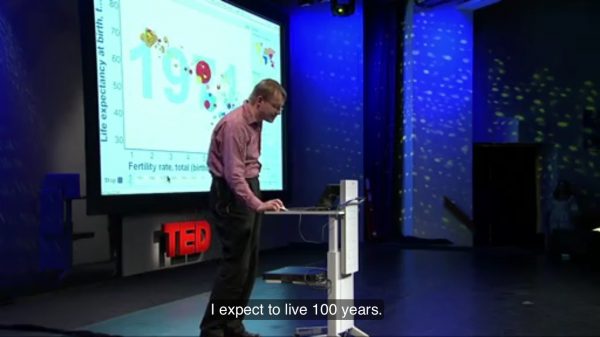I don’t agree with the theme of the anti-Trump protests held on Presidents Day. All the “not my president” slogans are wrong. Like it or not Trump is The President. With a capital “T” and “P”. You can disagree with every policy, with every word, with every mannerism and he’s still The President — your president. “Not my president” is how the republicans objected to Obama. It’s how the pro-Trump masses were groomed. Don’t go down that road. Respect the office. Fight the man but don’t institutionalize the idea that he does not, and cannot, sever The People — including those that didn’t vote for him. We must get back to a functioning government and that means politicians who can reach across and govern for all The People. Hold the president accountable but recognize that he is The President, like it or not.
Death by Vice
The vices of mankind are active and able ministers of depopulation.
Thomas Malthus [wikipedia.org] in An Essay on the Principle of Population
RIP Hans Rosling
It’s sad to hear about Hans Roslings death. Hans Rosling was my introduction to Big Data before the term existed via his early TED talks [ted.com].

He only made it to 68. He said he expected to make 100 years, now he won’t get to see if his other predictions come true.
Scientific Method
This:
“Science is not a body of facts … Science is a method for deciding whether what we choose to believe has a basis in the laws of nature or not.”
Marcia McNutt, quoted by Joel Achenback in Why Do Many Reasonable People Doubt Science? [nationalgeographic.com]
Also this, from the same article:
Scientific results are always provisional, susceptible to being overturned by some future experiment or observation. Scientists rarely proclaim an absolute truth or absolute certainty
Joel Achenbach, Why Do Many Reasonable People Doubt Science? [nationalgeographic.com]
The article is from 2015, but more relevant in the post-truth, alternative facts world.
Sunrise from Sungate
Due to a snowstorm in Istanbul my flight was diverted to Antalya [wikipedia.org] yesterday. After several hours crammed in the too small airport (some people were there 16 hours! I only spent 6ish hours,) we were transferred to hotels. I ended up in Rixos Sungate. An everything included vacation site that seems to cater mostly for Russians. The place has a spa, water park, theater, plenty of beach. More bars than you can shake a vodka at… much of it closed this time of year mind you. But all the food and booze was included, must have cost the airline a fortune. This morning on the way to breakfast I snapped the above photo with my iPhone. The scenery is beautiful. The ocean was amazing shades of blue. Too bad I didn’t bring my big camera on this trip. Too bad I only had one afternoon. There are some Roman ruins and beautiful landscapes around. Maybe one day.
Right now I’m in the lounge at Istanbul waiting on the final leg of my flight. And for that I had to buy a extra business class ticket because there are something like 30 thousand people here trying to reissue their tickets for the flights that got canceled or because they got diverted. It’s complete chaos. I saw two near fights, exhausted and confused people trying to get home or to their destination. Typically, no one knows what’s going on, everybody has a different story…
This is the third year in a row going for a annual event held in January I have had flight issues due to weather. Can we do this some other time next year?

